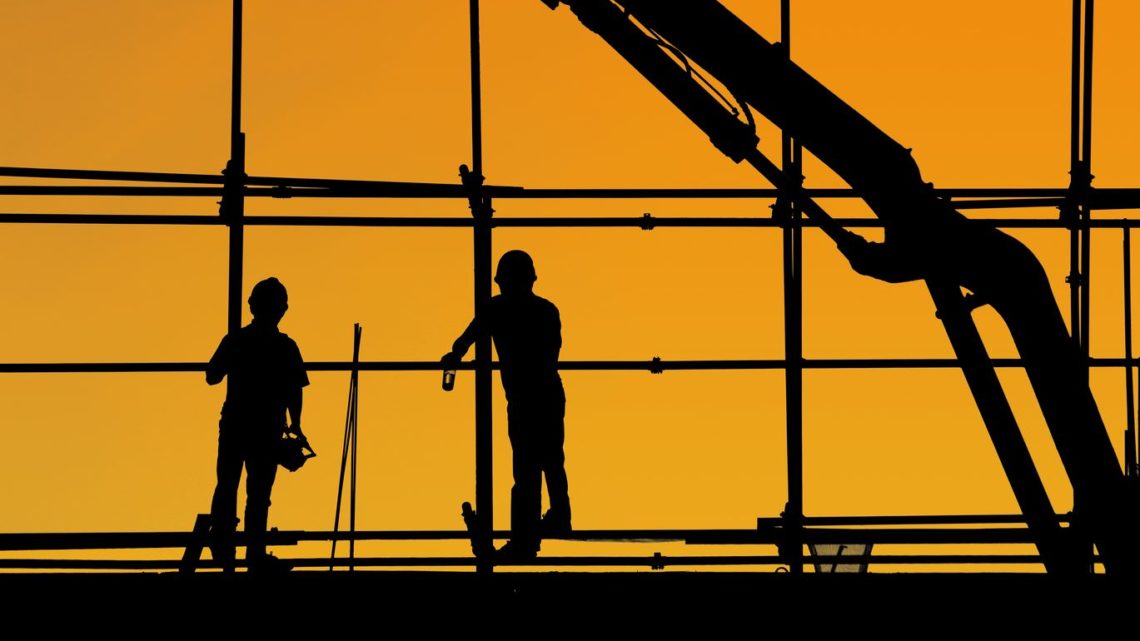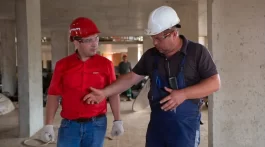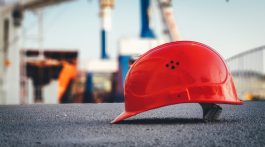The Fatal Four is outlined by OSHA as the four most dangerous causes for construction accidents and deaths on a job site. These accidents, as defined by OSHA, account for the four most common causes of construction job deaths.
In 2018 the fatal four accounted for 591 of the 1,008 construction deaths or 58.6% of all fatalities on a job site in the United States. The fatal four are composed of:
- Falls – Falls are the most common events that result in construction deaths. According to the Bureau of Labor Statistics, falls declined from 2017 to 2018 (the most recent reporting year) to 338. Falls can occur on the ground level, along scaffolding and from heights.
- Struck by Object – There are several moving parts on any given construction site. It’s no surprise that heavy and large machinery contributes to fatalities. In 2018, 112 deaths occurred as a result of construction workers being struck by an object.
- Electrocutions – Unsafe precautionary measures contribute to the rate of electrocutions on a construction site. Failure to maintain proper attire including personal protective equipment (PPE) can increase the risk of electrocutions on a job site. In 2018 there were 86 fatal electrocutions on a construction site.
- Caught-in/between – When caught-in or compressed by equipment, objects or struck caught or crushed in a collapsing structure. In the latest reporting year of 2018, 55 construction employees were killed
How to Protect Yourself on a Construction Job?
Construction workers have a dangerous job. In fact, various jobs across the construction industry check in a total of six times on a list of the 34 deadliest jobs. All of these jobs across the construction sector have a fatality rate of at least 10.6 deaths per 100,000 workers.
According to a New Jersey Construction Accident Lawyer, fatal accidents are frequently contributed to a lack of proper oversight and negligence. If you see something that looks unsafe on a construction site report it to your supervisor. If you feel unsafe and have reason to believe that a job site is unsafe, you are not required to work.
So How Does a Construction Worker Stay Safe on the Job?
There are several resources, techniques and tactics that can alleviate danger and facilitate safer working conditions for construction workers. Below are five techniques that can help save a construction worker’s life.
- Fall Protection – Duty to Have Fall Protection: Failure to provide proper fall protection resulted in 7,133 OSHA citations in fiscal year 2015. With proper training and education services, workers can help reduce fall accidents with the added precautionary measures of guardrails and safety nets.
- Scaffolding: Construction workers on scaffolding are exposed to falls, electrocutions and falling objects. Proper PPE equipment should be utilized at all times while working on scaffolding. This includes hard hats, protective eye wear and non-skid work boots. If a construction site is exposed to unfavorable work conditions including water, ice, snow or mud it should not be utilized. In the fiscal year of 2015 4,492 citations were issued for scaffolding violations.
- Stairways and Ladders: Accidents commonly occur while construction workers are using stairways or ladders. Improper use of these access points can result in unsafe conditions. Always ensure three points of contact while ascending or descending on a ladder and never carry materials or tools. Properly ensure that all of the materials and tools are properly hoisted into position to help alleviate dangerous situations. In fiscal year 2015, there were 2,662 citations issued for stairway and ladder violations.
- Fall Protection – Training Requirements: Providing continued fall training to a company’s employees is pertinent to workers safety. Employers are mandated to hold records of certifications of training sessions. In fiscal year 2015 1,584 violations were cited from OSHA.
- Personal Protection and Life Saving Equipment: When there are optic and facial hazards at a job site it is an OSHA requirement to utilize the proper safety equipment. Contaminants and hazardous materials that require this preventive equipment are molten metal, chemicals in liquid form, chemicals, acidic vapors and light radiation. Workers should ensure that their equipment fits properly upon their person and that the equipment is clean and in good repair. Facial and cranial preventive measures should be worn during welding, masonry, sanding, woodworking, drilling and additional tasks where particles are exposed.
Every year thousands of construction accidents occur that could be prevented with proper training, equipment or work refusal. If you believe that the working conditions on a construction site you’ve worked on are unsafe, or resulted in a workers compensation claim file an OSHA complaint. Don’t let a company’s lax safety policies result in a fatality on a job site.




No Comment